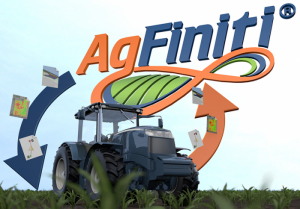 Whether they spray professionally or spray just their own acres, applicators know that a clean spray tank alone is no guarantee to preventing cross-contamination and crop injury. Crop injuring residues can build up in hoses, filters, end caps and other nooks where ordinary tank cleaners cannot effectively clean. Erase™ Spray System Cleaner from Precision Laboratories works throughout the system to penetrate, solubilize and emulsify hard-to-remove residues while protecting equipment with corrosion inhibitors.
Whether they spray professionally or spray just their own acres, applicators know that a clean spray tank alone is no guarantee to preventing cross-contamination and crop injury. Crop injuring residues can build up in hoses, filters, end caps and other nooks where ordinary tank cleaners cannot effectively clean. Erase™ Spray System Cleaner from Precision Laboratories works throughout the system to penetrate, solubilize and emulsify hard-to-remove residues while protecting equipment with corrosion inhibitors.
 “Modern sprayers offer a lot of places for buildup to hide,” said Jim Reiss, vice president of Agricultural Chemistries at Precision Laboratories. “Erase was formulated to attack the residues left behind from complex tank mixes. Combined with proper cleanout technique, Erase virtually eliminates the risk of cross-contamination that leads to crop injury complaints, yield loss and a damaged reputation as a professional applicator.”
“Modern sprayers offer a lot of places for buildup to hide,” said Jim Reiss, vice president of Agricultural Chemistries at Precision Laboratories. “Erase was formulated to attack the residues left behind from complex tank mixes. Combined with proper cleanout technique, Erase virtually eliminates the risk of cross-contamination that leads to crop injury complaints, yield loss and a damaged reputation as a professional applicator.”
With a use rate of just two quarts per 100 gallons of rinse water, Erase is an easy to use and economical solution.
“There is a lot more to a sprayer system than just the tank,” Reiss said. “Applicators will need to utilize better system cleaning technology and technique to avoid cross-contamination in the future. Erase is the cleaning technology they need to get a good start on effective spray system cleanouts.”

 It seems like every year it gets harder and harder to meet up with the consultant to grab your planting or seeding prescriptions; or if they do make it into our hands, the USB seems to get forgotten on the kitchen table.
It seems like every year it gets harder and harder to meet up with the consultant to grab your planting or seeding prescriptions; or if they do make it into our hands, the USB seems to get forgotten on the kitchen table. 







